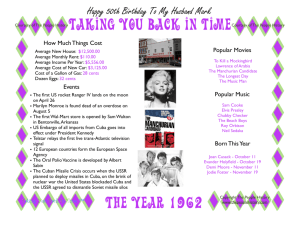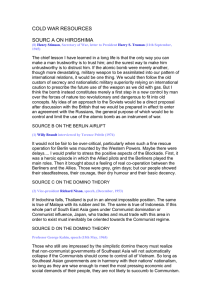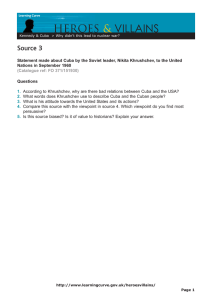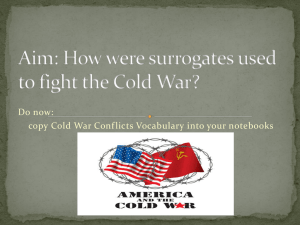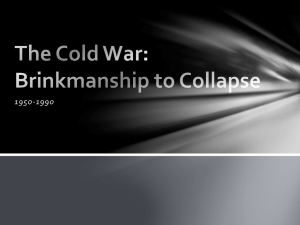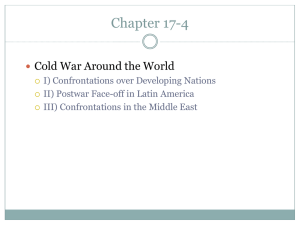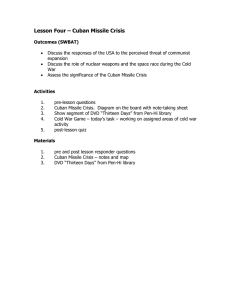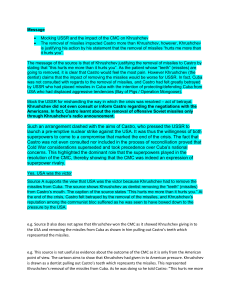VILLAINS HEROES & What triggered the Cuban missile crisis?
advertisement
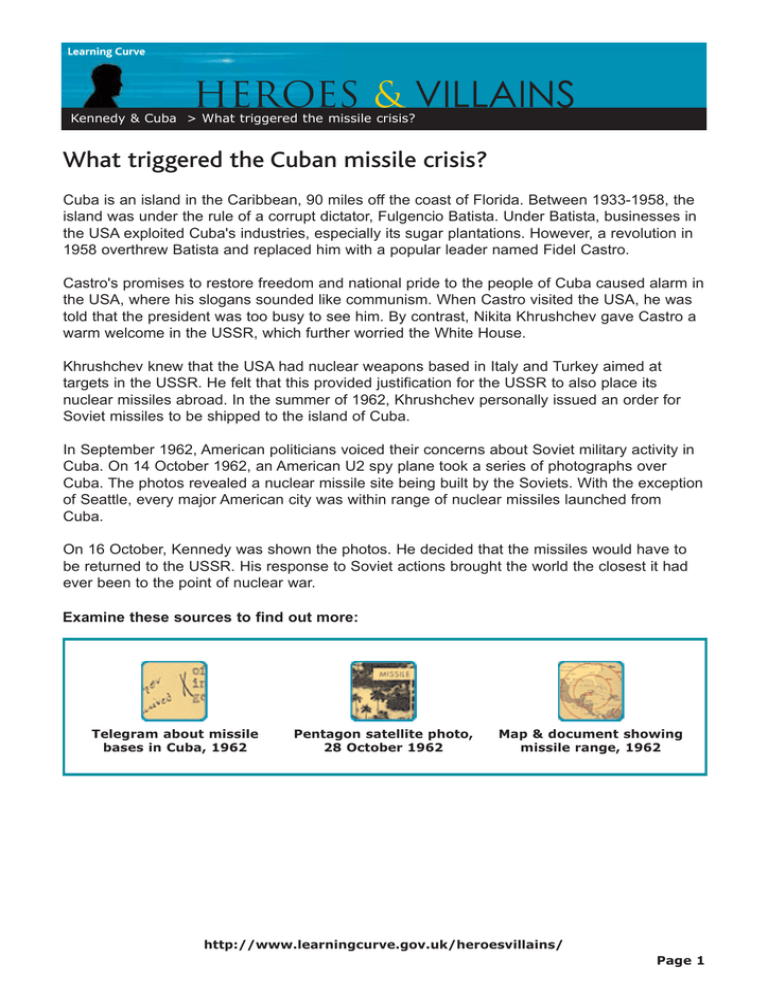
Learning Curve HEROES & VILLAINS Kennedy & Cuba > What triggered the missile crisis? What triggered the Cuban missile crisis? Cuba is an island in the Caribbean, 90 miles off the coast of Florida. Between 1933-1958, the island was under the rule of a corrupt dictator, Fulgencio Batista. Under Batista, businesses in the USA exploited Cuba's industries, especially its sugar plantations. However, a revolution in 1958 overthrew Batista and replaced him with a popular leader named Fidel Castro. Castro's promises to restore freedom and national pride to the people of Cuba caused alarm in the USA, where his slogans sounded like communism. When Castro visited the USA, he was told that the president was too busy to see him. By contrast, Nikita Khrushchev gave Castro a warm welcome in the USSR, which further worried the White House. Khrushchev knew that the USA had nuclear weapons based in Italy and Turkey aimed at targets in the USSR. He felt that this provided justification for the USSR to also place its nuclear missiles abroad. In the summer of 1962, Khrushchev personally issued an order for Soviet missiles to be shipped to the island of Cuba. In September 1962, American politicians voiced their concerns about Soviet military activity in Cuba. On 14 October 1962, an American U2 spy plane took a series of photographs over Cuba. The photos revealed a nuclear missile site being built by the Soviets. With the exception of Seattle, every major American city was within range of nuclear missiles launched from Cuba. On 16 October, Kennedy was shown the photos. He decided that the missiles would have to be returned to the USSR. His response to Soviet actions brought the world the closest it had ever been to the point of nuclear war. Examine these sources to find out more: Telegram about missile bases in Cuba, 1962 Pentagon satellite photo, 28 October 1962 Map & document showing missile range, 1962 http://www.learningcurve.gov.uk/heroesvillains/ Page 1
